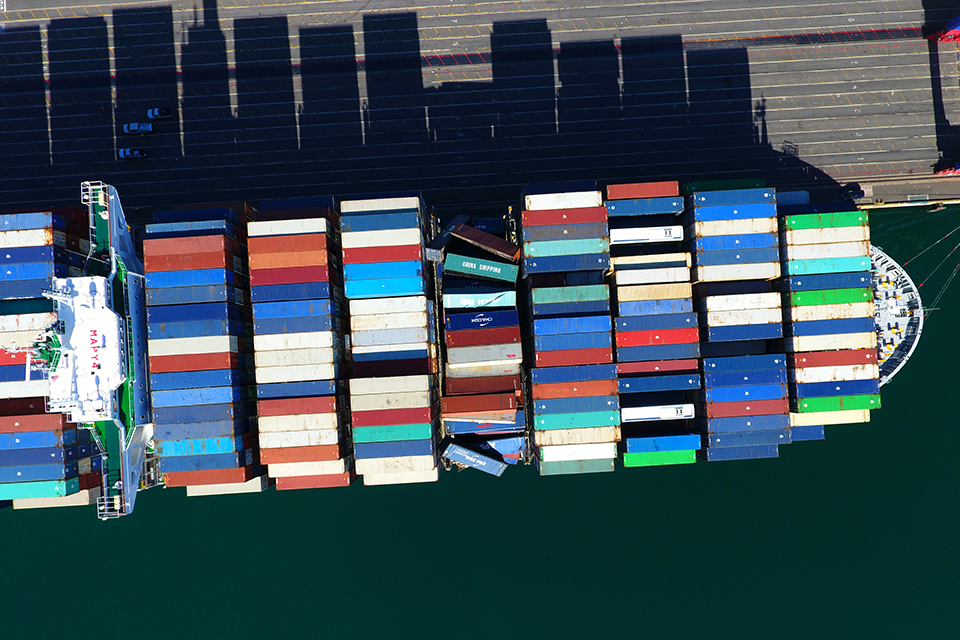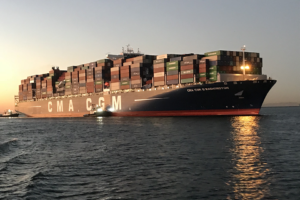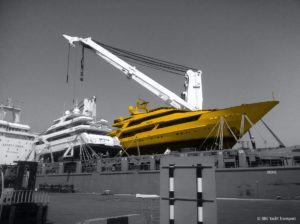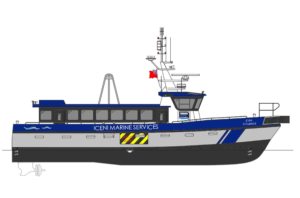MAIB releases report into loss of cargo containers from CMA CGM G. Washington

In January 2018, the then UK flagged container ship, CMA CGM G. Washington, unexpectedly rolled 20° to starboard, paused for several seconds, then rolled 20° to port, according to the Marine Accident Investigation Branch (MAIB). The ship was experiencing very heavy seas in the North Pacific Ocean while on passage from Xiamen, China to Los Angeles, USA. In daylight the following morning, the crew found that three container bays had collapsed, with 137 containers lost overboard and a further 85 damaged.
How many containers are lost each year?
According to the World Shipping Council (WSC), at any point in time, there are about 6,000 containerships active on the world’s seas and waterways.
WSC says obtaining an accurate assessment of how many containers are actually lost at sea has been a highly speculative process. For many years, there were widely circulated, but unsupported, claims that the industry might lose as many as 10,000 containers a year at sea.
In an effort to provide greater clarity and a more accurate assessment of the number of containers lost at sea on an annual basis, WSC undertook the first survey of its member companies in 2011, with updates in 2014 and 2017.
Unpicking WSC’s data appears to show it estimates there are on average 600 containers lost at sea each year, not counting catastrophic events. With catastrophic events included, the average increases to around 1,500.
Safety issues
MAIB’s report into CMA CGM G. Washington highlights safety issues which include the reduced structural strength of the non-standard 53ft containers, inaccurate container weight declarations, mis-stowed containers and loose lashings.
 Seemingly, bay 54 collapsed because the acceleration forces generated during the roll exceeded the structural strength of the non-standard 53ft containers stowed there.
Seemingly, bay 54 collapsed because the acceleration forces generated during the roll exceeded the structural strength of the non-standard 53ft containers stowed there.
Bay 58 failed because some of the containers were struck by the 53ft containers as they toppled overboard.
And, bay 18 failed as a result of a combination of factors but was probably initiated by the failure of one or more of the containers stowed there.
MAIB’s recommendations include ensuring that, where container terminals routinely weigh containers prior to loading, the cargo plan is updated to reflect these weights.
The Maritime and Coastguard Agency is recommended to promote UK container owners’ involvement in Bureau Internationale des Containers databases.
Bureau Veritas (Testing, Inspection and Certification) is recommending amending its rules to require on board lashing software to display maximum pitch and roll angles for the vessel’s condition, and to review its rules and approval procedure.
Catastrophic events
The data collected by WSC demonstrated that container losses in any particular year can vary quite substantially based on differences in weather and other unusual events.
For example, in 2013, there was a total loss of 5,578 containers – 77% of which occurred with the sinking of the MOL Comfort in the Indian Ocean. The total loss of vessel El Faro occurred two years later in 2015. All containers on the El Faro were lost and this event alone accounted for almost 43% of the total containers lost into the sea in 2015.
The 2017 survey included all WSC member companies, and additional information was made available on certain non-member catastrophic events.










